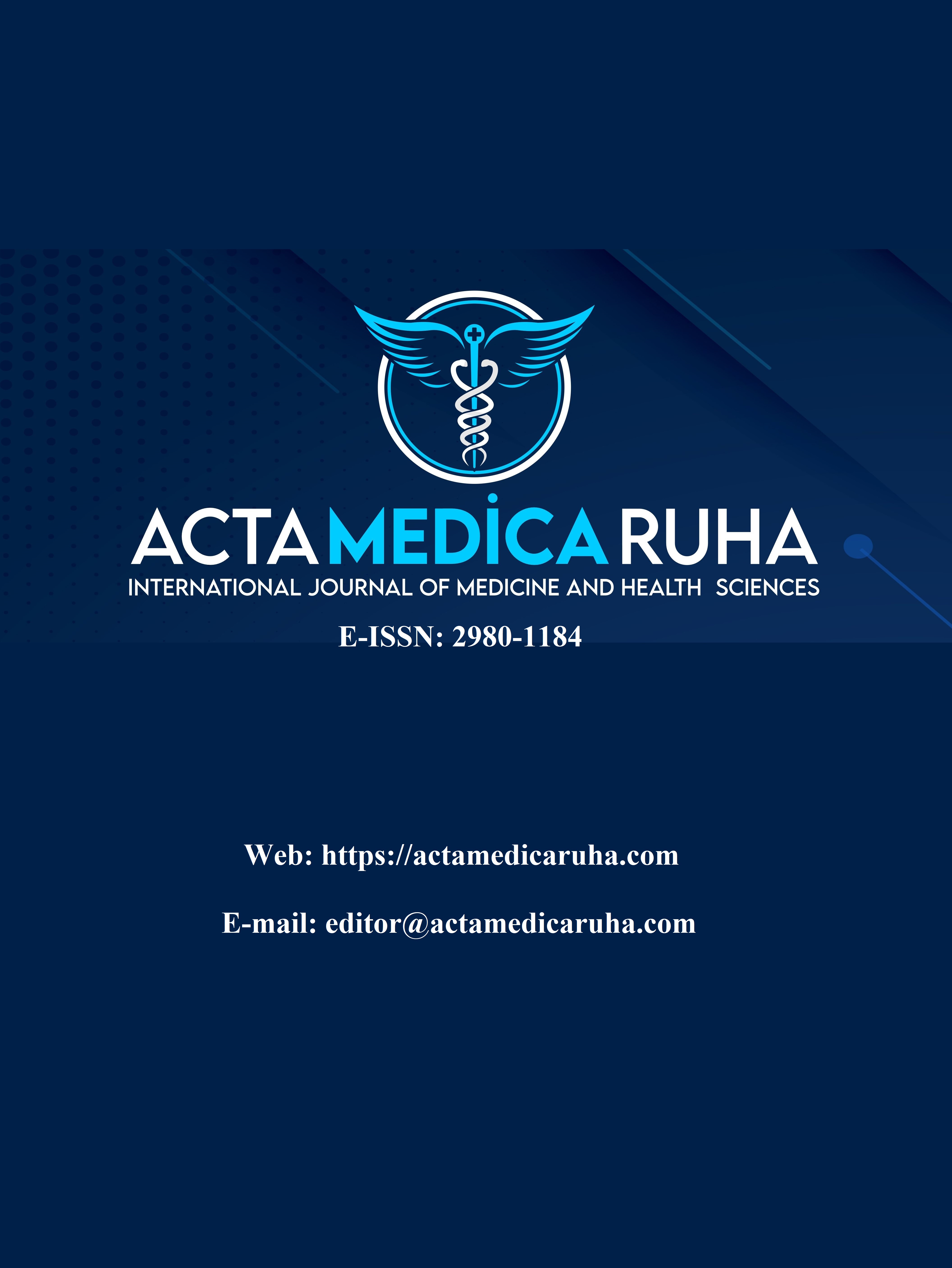Effect Of Home Visits by Nurses on Hemoglobin Levels Of 6-Month-Old Infants. A Nonrandomized Controlled Trial
Research Article
DOI:
https://doi.org/10.5281/zenodo.11655977Keywords:
6-Month-Old Infants, Nurse, Home Visit, Hemoglobin, Iron-Deficiency AnemiaAbstract
Background: Iron-deficiency anemia has a high prevalence among infants across the world including our country and contributes substantially to the global burden of disease. Therefore, it is a priority to develop preventive strategies to protect and promote infant health. This study sought to investigate the effect of home visits for 3 months by nurses on the hemoglobin levels of 6-month-old infants measured at 9 months.
Methods: This study adopted a quasi-experimental design in accordance with the TREND (Transparent Reporting of Evaluations with Nonrandomized Designs) checklist. The study sample consisted of 100 6-month-old infants, 50 in the intervention group and 50 in the control group. Infants in the intervention group received home visits three times in total, once every month. Control group infants received routine care. Data were collected using the questionnaire form and home monitoring and care form for 6–9-month-old infants. Data were analyzed using descriptive statistics, independent samples t-test, chi-square test, and Fisher’s exact test.
Results: Mean hemoglobin levels were higher in infants in the intervention group compared with that of the control group (p < 0.05). Hemoglobin levels were <11 g/dL in 48.0% of the infants in the intervention group and 68.0% of the infants in the control group (p < 0.05).
Conclusions: This study showed that iron-deficiency anemia remains a serious public health concern in the infants included in the study and home visits by nurses are effective in protection against and prevention of iron-deficiency anemia. Further research is warranted to gather a more robust evidence base.
References
WHO. Accelerating anaemia reduction: a comprehensive framework for action. World Health Organization (2023). Licence: CC BY-NC-SA 3.0 IGO.
Da Silva Lopes K, Yamaji N, Rahman MO., et al. Nutrition‐specific interventions for preventing and controlling anemia throughout the life cycle: an overview of systematic reviews, Cochrane Database of Systematic Reviews 2021;9: Doi.10.1002/14651858.CD013092.pub2.
. Ringoringo HP. Prevalence of Iron Deficiency Anemia and Reference Range of Complete Blood Count, Reticulocyte Parameters in Infants Aged 9–11 Months, International Journal of General Medicine. 2022;8017-8024. Doi: 10.2147/IJGM.S383055
Zheng J, Liu J, Yang W. Association of iron-deficiency anemia and non-iron-deficiency anemia with neurobehavioral development in children aged 6–24 months, Nutrients.2021;13(10):3423. Doi:10.3390/nu13103423
Pratt O. A review of the strategies used to reduce the prevalence of iron deficiency and iron deficiency anaemia in infants aged 6–36 months, Nutrition Bulletin. 2015;40(4):257-267. Doi: 10.1111/nbu.12170
Beyler Z. Prevalence of anemia and influencing factors in infants between 6-12 months registered in Okmeydanı training and research hospital Hürriyet Family Health Center connected to UHS Okmeydanı HARC (Health Application and Research Center), Health Sciences University, Medical Specialization Thesis, 2019, İstanbul
Elmalı ET, Hazar HU. Assesment of anemia in children 0-5 years old and midwife’s responsibilities. Journal of Adnan Menderes University Health Sciences Faculty. 2020;4 (2):171 182. Doi: 10.46237/amusbfd.505738
Sundararajan S, Rabe H. Prevention of iron deficiency anemia in infants and toddlers. Pediatric research. 2021;89(1):63-73. Doi.org/10.1038/s41390-020-0907-5
Araújo LKAR, Faria JCP, Sarni ROS. Iron deficiency anemia in infants in Sousa (PB), Brazil: an association with nutritional status, Revista da Associação Médica Brasileira. 2022;68:1698-1704. Doi:10.1590/1806-9282.20220761.
TUİK (Turkish Statistical Institute). Child Turkey Health Survey with Statistics. 2022
Nunes LM, Führ J, Belin CHS., et al. Bernardi. Complementary feeding methods in the first year of life: a study protocol for a randomized clinical trial, Trials. 2021;22:687.Doi: 10.1186/s13063-021-05647-1
Lweno O, Hertzmark E, Darling AM., et al. The high burden and predictors of anemia among infants aged 6 to 12 months in Dar es Salaam, Tanzania, Food and Nutrition Bulletin. 2022;43(1):68-83. Doi: 10.1177/03795721211007009
Lozoff B, Smith JB, Clark KM., et al. Castillo. Home intervention improves cognitive and social-emotional scores in iron-deficient anemic infants, Pediatrics. 2010;126(4):e884-e894. Doi:10.1542/peds.2009-3535.
Varea A, Disalvo L, Fasano MV., et al. Gonzalez. Effectiveness of weekly and daily iron administration for the prevention of iron deficiency anemia in infants, Archivos argentinos de pediatria. 2023;121(4):e202202815. Doi.org/10.5546/aap.2022-02815.eng
Kahraman S, Havlioğlu S. The effect of home nurse visits on infant weight and breastfeeding: Systematic review and meta-analysis, Int J Nurs Pract. 2023;e13150.Doi: 10.1111/ijn.13150.
Sweet MA, Appelbaum M.I. Is home visiting an effective strategy? A meta-analytic review of home visiting programs for families with young children, Child Development.2004;75(5):1435-1456.
Kartal SB, Birler AG, Özkul D., et al. The improvement of prenatal, postnatal, newborn and preschool child's health care services in Istanbul: GEBLİZ, TAF Preventive Medicine Bulletin. 2010;9(4):289-296.
Durduran Y, Bodur S, Çakıl E., et al. Monitoring of pregnant and infants in Konya district before and after transformation in health-care system, Dicle Medical Journal. 2012;39(2):227-233.Doi: 10.5798/diclemedj.0921.2012.02.0132
Fuller T, Peters J, Pearson M., et al. Impact of the transparent reporting of evaluations with nonrandomized designs reporting guideline: ten years on, Am J Public Health Nov. 2014;104(11):e110-7.
Naiboğlu E, Naiboğlu S, Turan E., et al. Investigation of incidence of iron deficiency anemia in Patients with Lower Respiratory Tract Infection in Child Clinic, Medical Journal of Bakirkoy. 2019;15(3):Doi: 10.4274/BTDMJB.galenos.2018.20180604094058
Bahar A. Karademir F, Aral YZ., et al. The value of erythrocyte zinc protoporphyrin/heme ratio for determining the prevalence of iron deficiency anemia in children, Journal of Child Health and Diseases. 2003;46(1):24-29.
Kiriş S. Examination of iron deficiency anemia in infancy and various affecting factors. Süleyman Demirel University Institute of Health Sciences Department of Public Health 2010.
Chen CM, Mu SC, Shih CK., et al. Iron status of infants in the first year of life in Northern Taiwan, Nutrients. 2020;12(1):139. Doi:10.3390/ nu1201013922
Salah RW, Hasab AAH, El-Nimr NA., et al. The prevalence and predictors of iron deficiency anemia among rural infants in Nablus Governorate, J Res Health Sci. 2018;18(3):e00417.23.
Tiruneh GT, Shiferaw CB, Worku A. Effectiveness and cost-effectiveness of home-based postpartum care on neonatal mortality and exclusive breastfeeding practice in low-and-middle-income countries: a systematic review and meta-analysis, BMC pregnancy and childbirth. 2019;19:507-526. Doi:10.1186/s12884-019-2651-6
Downloads
Published
How to Cite
Issue
Section
License
Copyright (c) 2024 Acta Medica Ruha

This work is licensed under a Creative Commons Attribution 4.0 International License.









